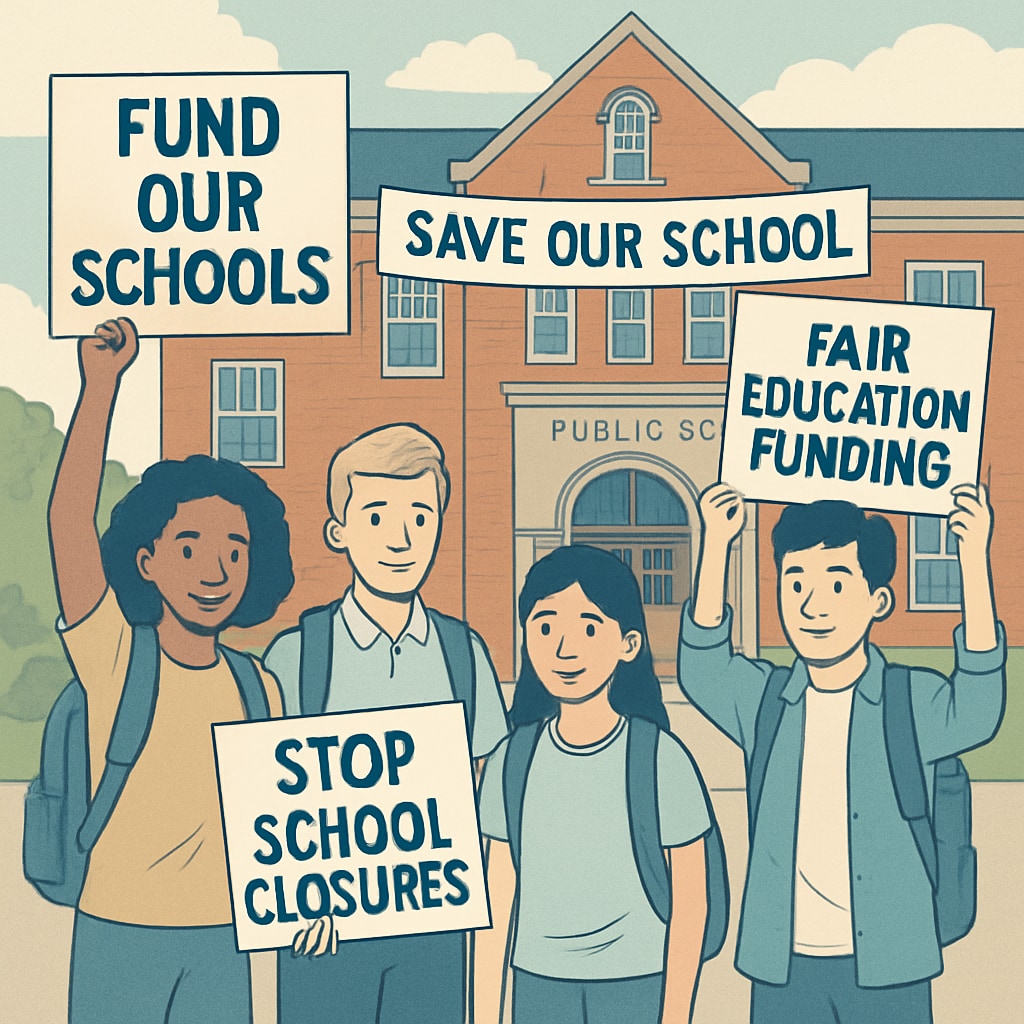Public education in the United States is facing an alarming trend of underfunding and resource depletion, as organizations like Stand For Children allegedly redirect public education funds toward private institutions. While these organizations claim to advocate for better educational outcomes, their actions often undermine the very foundations of K12 public education. This article explores how such policies are impacting public schools, leading to resource scarcity, school closures, and teacher attrition, all while raising questions about the true motives behind these shifts.
How Public Education Funds Are Being Redirected
In recent years, there has been a noticeable shift in how public education funds are allocated. Rather than bolstering the public school system, significant portions of these funds are being funneled to private entities, including charter schools and voucher programs. Organizations like Stand For Children have played a key role in advocating for such policies under the guise of educational reform. However, critics argue that these reforms often prioritize private interests over public welfare.
This redirection of funds has several consequences:
- Underfunded Public Schools: Public schools are left with fewer resources to invest in infrastructure, learning materials, and extracurricular programs.
- Teacher Shortages: Budget cuts lead to lower salaries and benefits, pushing many educators to leave the profession.
- School Closures: Communities, particularly in low-income areas, face the closure of neighborhood schools, forcing students to travel farther for education.

The Role of Stand For Children in Privatization
Stand For Children was initially founded with the mission to improve public education outcomes. Yet, over time, its focus appears to have shifted toward supporting legislation that diverts public funds to private institutions. By lobbying for policies like expanded charter school networks and voucher systems, the organization has been instrumental in accelerating the privatization of education.
For example, in states like Indiana and Tennessee, Stand For Children has backed initiatives that direct taxpayer dollars to private schools through school choice programs. While proponents argue that these programs offer families more options, they simultaneously drain resources from public schools, leaving behind a system that struggles to meet the needs of its students.
The Hidden Costs of Privatizing Education
The privatization of public education carries significant hidden costs, both financial and social. For one, private institutions often operate without the same level of accountability and transparency as public schools. This raises concerns about the equitable use of taxpayer dollars. Additionally, the shift toward privatization exacerbates educational inequality by concentrating resources in wealthier areas while neglecting underprivileged communities.
Moreover, the closure of public schools due to funding shortages can have ripple effects on local communities. Schools often serve as community hubs, providing not just education but also meals, healthcare, and social services. When these schools shut down, entire neighborhoods suffer.

What Can Be Done to Protect Public Education?
To counteract these trends, policymakers, educators, and communities must work together to safeguard the future of public education. Several steps can be taken, including:
- Increasing Transparency: Ensure that organizations influencing education policy disclose their funding sources and legislative goals.
- Prioritizing Public Schools: Allocate sufficient resources to public schools to meet the diverse needs of students.
- Holding Private Institutions Accountable: Require private schools receiving public funds to adhere to the same standards of accountability as public schools.
- Engaging Communities: Empower local communities to have a voice in education policy decisions that directly affect them.
Public education is a cornerstone of democracy and social equity. Allowing its erosion in favor of privatization risks deepening societal divides and leaving millions of children without access to quality education.
Readability guidance: This article uses short paragraphs, bulleted lists, and clear transitions to maintain readability. Active voice has been prioritized to enhance engagement, and key points have been distributed evenly throughout the text for better comprehension.


